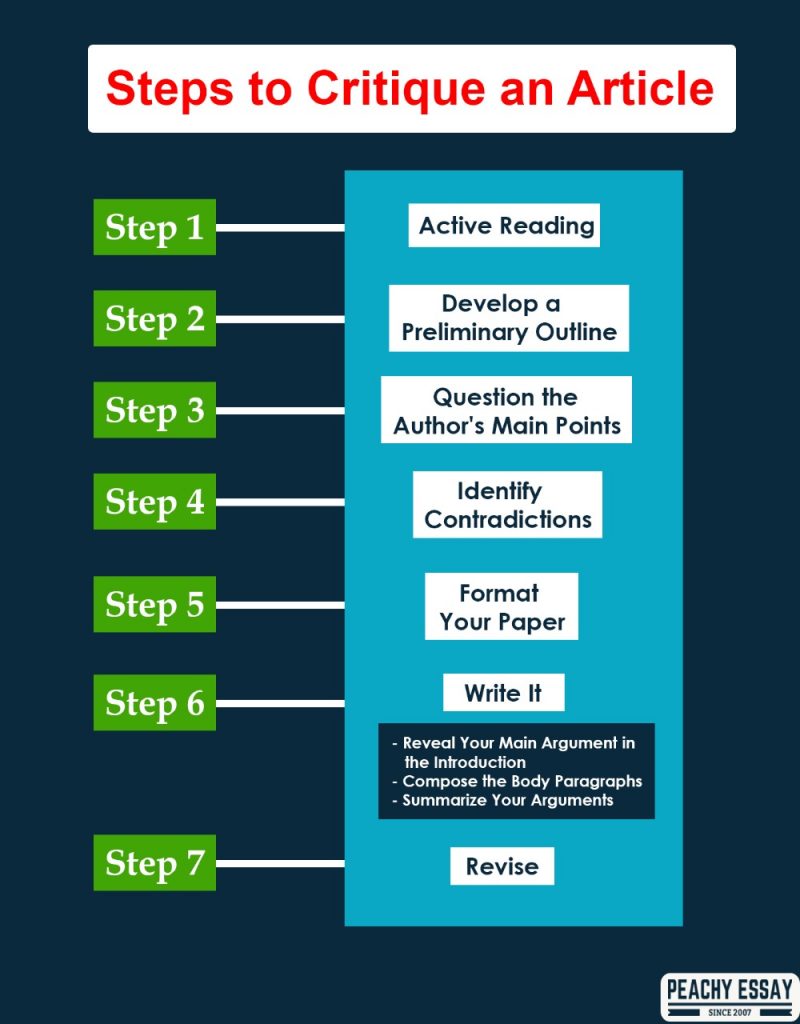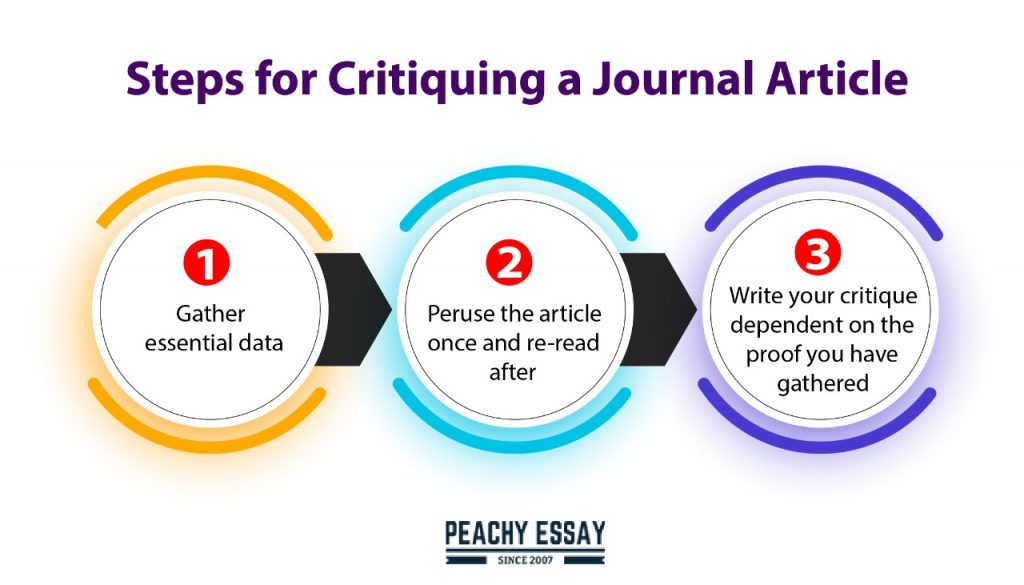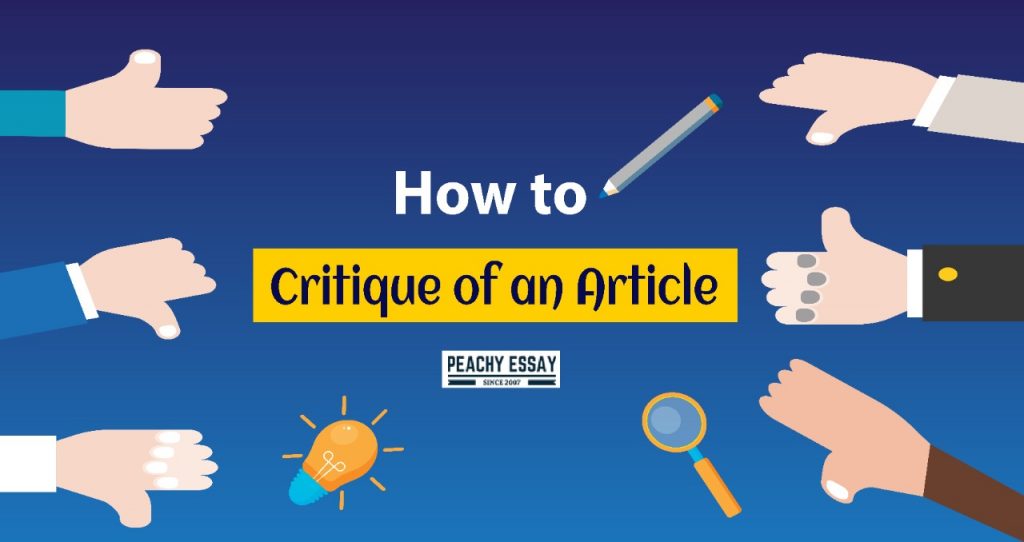The article critique can be alluded to as objective kinds of examination of scientific papers. In these investigations, there is generally some emphasis placed on if the author underpins the article’s central matters. Note that this emphasis is done dependent on applicable and sensible contentions that are established on realities.
Many people find themselves making summaries of articles without challenging and examining them. This is something that ought to be discarded in light of the fact that there is no evaluation included. A substantial evaluation exposition is intended to exhibit an individual’s impression of a specific article. This ought to be done while simultaneously giving enough proof to strengthen these impressions.
When you take the situation of a critic, you should take as much time as necessary to examine and peruse the article cautiously. Whenever you have done this, you should then move to set up your proof and contentions aptly.
What is an Article Critique?
An article evaluation is a task that requires an understudy to peruse a research article and reflect upon it. The key assignment is to recognize the solid and frail sides of the piece and evaluate how well the author deciphers its sources. Basically, a critique reflects upon the legitimacy and adequacy of the article’s writer’s contentions in their work.
Critical thinking is the way through which you can achieve success in this paper. The assignment of each writer of a research article is to persuade readers regarding the rightness of their perspective, regardless of whether it is slanted.
What a Good Article Critique Should Deliver
The fundamental objective of critiquing an article is to show whether the author gave sensible contentions and realities for their primary points.
Here is what a good article critique should deliver
- Rather than basically summing up the primary concerns of the article, you should investigate them. This is the place where most understudies commit an error; they offer a simple outline of the research article they read. Journal articles already have summaries. Your educator would not like to get that. They need your exceptional assessment and discussion.
- You ought to give your impressions of the article as well as the proof that backs them up also.
- Besides identifying the main thought of the article, you ought to likewise explain its background and purpose.
- More importantly, you’ll focus on the issues this article raises, just like the ones it evades.
How to Critique an Article Critique
Here are the means for composing an article evaluate

Step 1: Active Reading
You can’t evaluate a research article before you peruse and understand it. These journal articles can be very extensive, and they regularly include terms you don’t comprehend. That is the reason reading won’t be sufficient. You’ll need to take part in dynamic and active reading, accompanied by some research, so you can characterize and comprehend the terms that are unfamiliar to you.
During this process, you will notice facts and insights regarding the content. You will recognize the primary concern of the author, just like the arguments, they used to help that point.
This implies that you’ll certainly require a marker, just as a note-taking application. If you lean toward taking notes the old-design way, get a note pad and begin composing as you read.
Try to recognize these principle parts of the research as you read through the article:
- Research problem
- Research hypothesis
- Research Methods
- Research participants
- Variables
- Principle discoveries
- Conclusions
You’ll presumably have to peruse the article a few times before you’re finished with this stage. You’ll find new layers with each perusing, and thought on the best way to investigate will come to your mind. Take notes of those thoughts, as well.
Step 2: Develop a Preliminary Outline
Since you have an intensive comprehension of the article and you took a lot of notes, it’s an ideal opportunity to arrange them into an outline. Why would that be a preliminary outline? – Because you’re as yet not done with the process of evaluation. In this outline, you’ll simply arrange for how you’ll talk about the main points of the article.
Step 3: Question the Author’s Main Points
The article critique isn’t a summary; it’s an investigation from a critical point of view. In spite of the fact that your fundamental objective isn’t persuasion, you actually need to build up a persuading conversation.
To accomplish that, you should keep thinking about whether the essayist’s general message is intelligent. This objective will need research. You scarcely have the whole base of information required for examining a scientist’s work. Hence, you’ll need to look for comparative models and contrast this present article’s theory and them.
You can check the rationale of the message in a simple manner: think about the introduction and the conclusion. Do the components of these two areas coordinate?
In addition to the principal message and the rationale of the article, you’ll question different perspectives, as well:
The research methods
The outcomes
The discussion
The elaborate components
If the author’s style is incomprehensive, you may utilize that argument as a component of your study.
At the point when you’re scrutinizing the primary components and purposes of the article, recollect that: you’re not obliged to compose a negative critique. The study can be positive also. If you concur with all points, you’ll compose a positive critique. If you disagree, you’ll compose your comments. In case you’re someplace in the middle, you’ll emphasize both the positive and negative components of the article. Regardless, you should utilize solid contentions to help your pints.
Step 4: Identify Contradictions
All through the perusing, perhaps you recognized a few logical inconsistencies in the article. Scientists, regardless of whether purposefully or accidentally, can be one-sided. Hence, they may disregard the opposite evidence or even misjudge it, so they will make it advantageous for them.
This inclination can emerge out of biases. A clinical master will have biases towards Chinese medication. Note any predispositions, and you’ll discover the inconsistencies. At whatever point the author makes reference to another writer’s work, look at that source. Truly; it will require more reading, but it will assist you with distinguishing the frail points in the article, so you’ll have the option to study it.
Step 5: Format Your Paper
Much the same as some other composed task, a critique paper ought to be designed and organized appropriately. A standard article critique comprises of four sections: an introduction, summary, critique, and conclusion. The following is a checklist to help you understand how a decent paper ought to be arranged:
- Introduction
The introduction should have the name of the writer, the title of the article, the core thought of the author, and a thesis showing the direction of your critique.
- Summary
The summary entails the fundamental idea of the article, the main arguments in the article, and the conclusion of the article.
- Critique
The critique features the solid and weak sides of the article. Additionally, it encompasses an informed opinion about the relevancy, clarity, and accuracy of the work.
- Conclusion
The conclusion outlines the central issues of the article. It entails your decision on the importance of the exploration.
If you note that the study is relevant, say something about why further investigation in this field can be valuable.
Step 6: Write It
You’ll have a lot of notes by this stage. You should sort out them in an outline, so you’ll understand what intelligent movement to follow as you talk about the article. When you’re prepared, you may begin with the writing process.
Here is how to write it:
- Reveal Your Main Argument in the Introduction
It isn’t so difficult to begin composing the introduction. You ought to give the title of the article you’re investigating, its writer’s name, the journal where it was published, and the publication date. At that point, you’ll say something about the main point of this exploration article. Include a thesis statement in the introduction.
Most kinds of scholastic papers contain a thesis statement in the introduction. In the article critique, the introduction ought to outline your fundamental contention. Reveal your central matters of critique in this statement, so it will give the reader an idea of what they are going to peruse.
- Compose the Body Paragraphs
This is where real critique begins. Every paragraph ought to develop another purpose of the article. Since this is certifiably not a 5-passage exposition, you may utilize subheadings for these segments. In case you’re composing a short article critique, you don’t need to do that.
Each section of the body should begin with a topic sentence, which you’ll grow further in the passage. Ensure there’s a logical connection between these pieces of the paper.
- Summarize Your Arguments
In the end, you’ll sum up your critique and you’ll propose its likely ramifications. You may suggest further examination, which will shed new insight into the issue and will improve the work by the author you just studied.
Step 7: Revise
Try not to avoid this part. The article critique is a genuine venture, which should show your ability of critical thinking and argumentation. If you neglect to revise it, even the smallest blemish will demolish the impression for the reader.
During this process, focus on the references. Did you reference all sources appropriately? Edit the reference index, as well! If you don’t have the foggiest idea of how to design it, use reference management software, such as Mendeley or Zotero.
Read more: Best Tips on Writing a Lab Report
How to Critique a Journal Article
Here are the steps for critiquing a journal article.

1. Gather essential data
Notwithstanding the subject of the article, you will evaluate, your paper needs to contain some essential data, including the:
- Title of the article surveyed.
- Title of the journal where it is published, alongside the date and month of distribution, volume number, and pages where the article can be found.
- Explanation of the primary issue or issue revealed in the piece.
- The reason, research techniques, approach, speculation, and key discoveries.
2. Peruse the article once and re-read after
To start with, get an outline of it and handle the overall thought of it. A decent critique ought to mirror your qualified and educated opinion with respect to the article. To shape such an assessment, you need to peruse the piece once more, this time fundamentally, and feature all that can be helpful for composing your paper.
3. Write your critique dependent on the proof you have gathered
Ensure to compose a critique based on the evidence you have collected. Don’t forget to cite and reference your sources.
How to Critique a Research Article
If you are considering how to scrutinize a research article specifically, here are the critical strides to follow.
Before you begin composing:
- Pick a piece that meets the directions of your teacher.
- Peruse the entire article to get a grasp on the primary thought.
- Re-read the piece with a basic eye.
While reading, don’t hesitate to do the following:
Explain how qualified the author is on the picked subject. What are the author’s certifications?
Think about the research methods utilized. Are the techniques the author picked fitting and supportive for answering the research questions?
Assess the outcomes. Are there any indications of the generalization of the results?
Search for any predisposition in the article. Is there any conflict of interest or evidence of bias?
Define the overall quality of the research work. Does the article appear to be relevant or obsolete?
Focus on the sources utilized. Did the sources back up their research with a hypothesis as well as previous literature identified with the topic?
Formatting Your Article Critique
Here is how to format your article critique.
Introduction
You shouldn’t write an introduction that exceeds two paragraphs and ensures your critique’s fundamental outline has clearly been laid out. Start by noticing the areas where the article in your investigation succeeds or flops most amazingly while offering motivations to help your stand.
It is fundamental for you to make sure to incorporate the writer’s name, a statement with respect to the proposition and article’s focus, the journal and article’s title, its publication date in the article critique introductory paragraph. Additionally, note the fundamental scholastic composing style that is regularly used is APA style article studies, except if your educator tells you otherwise.
Body
All the sections in your study article body should discuss groundbreaking thoughts or, better actually, grow your points further and toward another path. Start all the body sections with topic sentences that help to sum up the passage’s content.
Conclusion
Wrap up your critique by making a summary of your argument and giving potential implications
It is indispensable for you to recap your APA design article study’s central matters while likewise disclosing to the readers the pertinence of your audit to the entire discipline. This will help readers to comprehend that your work has more extensive ramifications to that specific field of study and not simply endeavoring to expose another researcher’s chaotic work. Ultimately, you ought to endeavor to make sure that you have left a perpetual blemish on your readers in your article’s decision by means of the utilization of explicit language to show your work’s significance.




